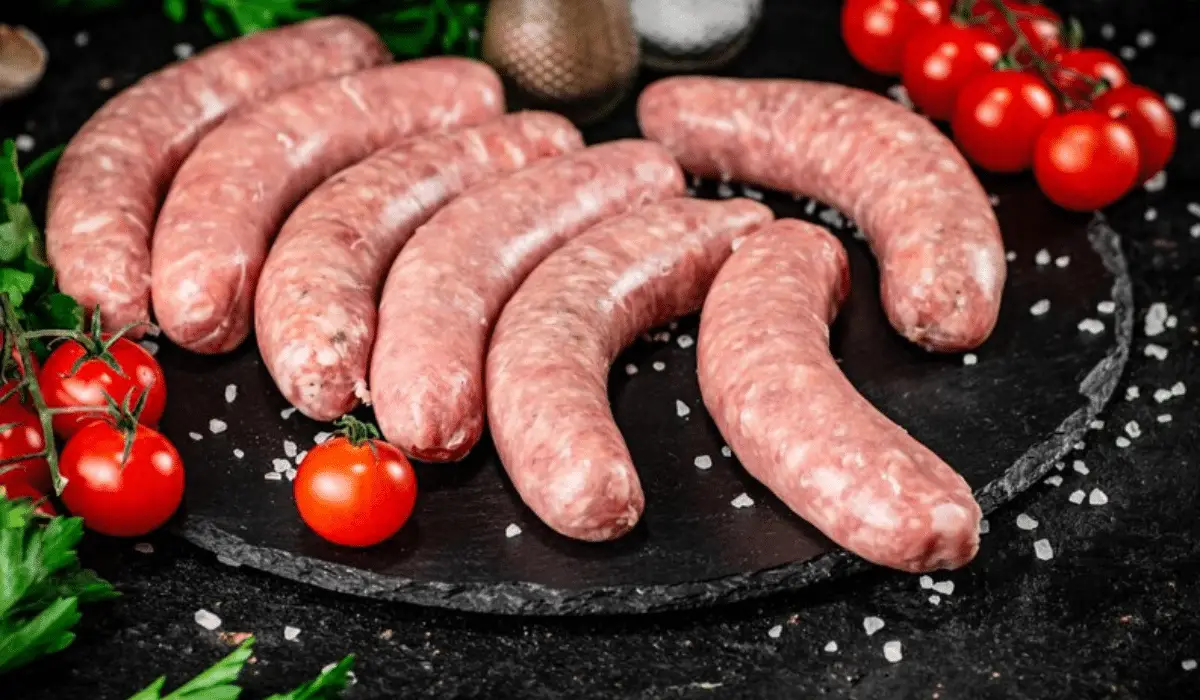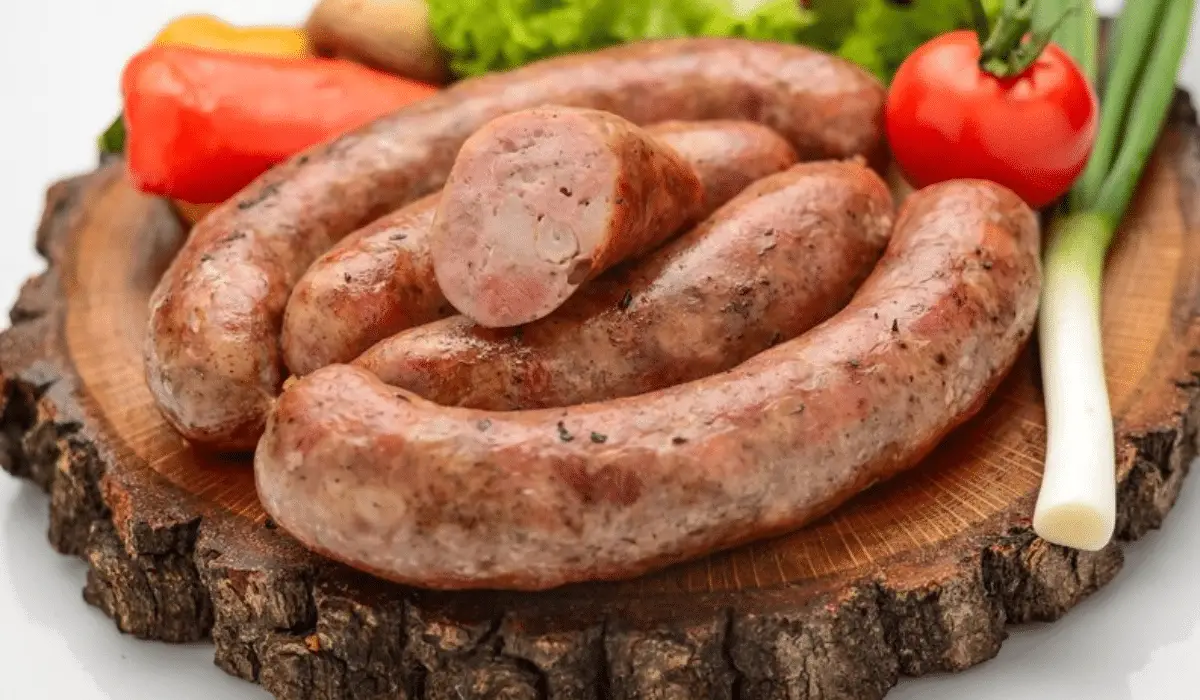Introduction to the World of Sausages: A Journey Through History
A Glimpse into Sausage’s Past
Who invented sausage? This question takes us on a fascinating historical journey. Sausages, a culinary staple, have existed since ancient times. Their creation, borne out of necessity for preserving meat, has evolved into an art form, cherished globally.
The Global Tapestry of Sausages
Interestingly, every culture has embraced and adapted sausages, infusing them with local flavors and traditions. This global acceptance highlights their cultural significance, making sausages not just food but a symbol of culinary unity and diversity.
For a deeper understanding and more detailed information on this topic, I highly recommend exploring Delicious Polish Sausage Recipes: Classic and Modern Twists
Transitioning from mere sustenance to a cultural icon, sausages have become integral to numerous festivals and traditions worldwide, celebrating the rich, diverse heritage that answers the intriguing question: Who invented sausage?
The Ancient Origins of Sausage Making: A Journey Through Time
Tracing Back to the Earliest Sausages
“Who invented sausage?” This question takes us on a fascinating journey back in time. The history of sausage begins in the ancient worlds of Sumeria and China. Remarkably, these early civilizations pioneered sausage making as a method to preserve and utilize every part of hunted animals.
The Sumerians, known for their ingenuity, may have been among the first to create sausages. They understood the value of using intestines as natural casings, a practice crucial to traditional sausage making. Meanwhile, in ancient China, we find references to sausage-like foods in historical texts. These early Chinese sausages, made from minced meat and spices, were an innovative solution to food preservation challenges.
Sumerians and Chinese Contributions
Interestingly, the question “Who invented sausage?” cannot be answered definitively. Both the Sumerians and the Chinese made significant contributions to the development of sausage. Their techniques and recipes laid the groundwork for what would become a global culinary phenomenon.
The Sumerians excelled in using every part of the animal, showing respect for their resources and ensuring nothing went to waste. This approach was not only practical but also sustainable. On the other side, the Chinese introduced unique spices and flavors, enriching the culinary diversity of sausages.
In conclusion, the invention of sausage is a testament to human innovation in food preservation. The contributions of the Sumerians and Chinese are undeniable and continue to influence sausage making to this day. As we delve into this rich history, we appreciate the ingenuity that led to one of the world’s most beloved foods.
The Evolution of Sausage Through the Ages
Roman Era: Spreading the Art of Sausage Making
The question “Who invented sausage?” leads us back to ancient civilizations, particularly the Romans. They played a crucial role in refining and spreading sausage-making techniques. Harnessing their expansive empire, the Romans introduced various sausage recipes across Europe, blending local flavors and meats. This era marked a significant advancement in the culinary world, elevating sausage from a mere food item to a gastronomic art form.
Medieval Europe: A Hotbed of Innovation
Transitioning into the medieval period, Europe witnessed a surge in sausage diversity. Each region started experimenting, leading to an explosion of unique varieties. This period was crucial in sausage evolution, as local ingredients and traditional methods melded to create distinct flavors. The Middle Ages, therefore, stand out as a pivotal time in answering “Who invented sausage?” Each community contributed its twist, making sausage not just a Roman invention but a pan-European culinary treasure.
In summary, the journey of sausage through the ages showcases a remarkable blend of cultural influences and culinary innovation. Starting with the Romans and flourishing in medieval Europe, sausages have become a beloved part of global cuisine.
Health and Nutrition in Sausage Consumption
Nutritional Profile of Sausages
When pondering “Who invented sausage?”, it’s equally important to consider their nutritional aspects. Sausages, a diverse group of foods, vary in nutritional value. Generally, they provide essential proteins, fats, vitamins, and minerals. However, the nutritional content significantly differs based on the type and preparation of the sausage. For instance, leaner meats like chicken and turkey offer lower fat options, whereas traditional pork sausages are richer in fats.
The Debate Over Sausage and Health
While sausages are undeniably flavorful, their health impacts spark ongoing debates. Critics often point to the high fat and sodium content in many sausages, linking them to health concerns like heart disease and high blood pressure. Moreover, processed sausages sometimes contain additives and preservatives, raising questions about their long-term health effects.
Conversely, advocates highlight the importance of moderation and the role of sausages in a balanced diet. They argue that when consumed responsibly, sausages can be part of a healthy diet.
In conclusion, while the question “Who invented sausage?” leads us back in time, the discussions around their health impacts remain highly relevant today. By understanding the nutritional value and acknowledging the debates, consumers can make informed choices about including sausages in their diets.
The Global Sausage Market
Trends and Demand for Sausages Worldwide
As we explore “Who invented sausage?”, it’s fascinating to see how this invention has turned into a global phenomenon. Today, the demand for sausages spans continents, reflecting diverse culinary preferences. In Europe, traditional flavors continue to reign, while in Asia, innovative blends incorporating local spices are gaining popularity. The U.S. market shows a growing interest in artisanal and organic sausages, responding to health-conscious consumers. This worldwide trend highlights the universal appeal of sausages, transcending their humble origins. For a comprehensive overview of the sausage market’s growth and trends from 2023 to 2030, see the Sausage Market Size, Research Report 2023-2030.
The Business of Sausage Making
The journey from asking “Who invented sausage?” to witnessing its commercial success is remarkable. The sausage industry, thriving on heritage and innovation, has become a lucrative segment in the global food market. Manufacturers are constantly adapting, offering a range of products from gourmet to fast-food options. This adaptability not only boosts sales but also keeps the tradition of sausage making alive and relevant. The business aspect, therefore, is not just about profit but also about preserving a culinary legacy that dates back centuries. For insights into a specific market segment, consider the Salmon Sausage Market Size & Share – Industry Report, 2032.
Cultural Significance and Variations
In essence, the global sausage market is a testament to the enduring popularity of this food item. From its mysterious origins to becoming a staple on dinner tables worldwide, the sausage continues to evolve, meeting the tastes and demands of a diverse global audience. To understand the cultural significance and variety of sausages, particularly in European cuisine, explore the Portuguese Traditional Sausages: Types, Nutritional Composition, and Trends.
For further reading and in-depth analysis, our extensive article on this topic is a valuable resource Why is Crab So Expensive? An Insight into the Delicacy’s High Cost
Innovations and Future of Sausages
Vegetarian and Lab-Grown Sausages
As we delve into the history of sausages and ponder “Who invented sausage?”, we also turn our gaze to the future. The world of sausages is not just about the past; it’s evolving. A significant innovation in this field is the rise of vegetarian and lab-grown sausages. These products cater to the growing demand for sustainable and ethical meat alternatives. Vegetarian sausages, made from plant-based ingredients, are capturing the essence of traditional flavors without the use of animal products. Similarly, lab-grown sausages represent a groundbreaking step. Scientists cultivate meat from animal cells, creating sausages that mimic the taste and texture of meat, but with a significantly lower environmental impact.
Sustainability in Sausage Production
Sustainability is becoming a key focus in sausage production. As the world becomes more conscious of environmental issues, the question “Who invented sausage?” expands to include “How can we make sausage production more sustainable?” Producers are now exploring ways to reduce their carbon footprint. This includes using locally sourced ingredients, minimizing waste, and adopting energy-efficient methods. The goal is to create sausages that are not only delicious but also kind to our planet.
In conclusion, the future of sausages is exciting and dynamic. With innovations like vegetarian options and lab-grown meats, the industry is responding to modern demands for sustainability and ethical consumption. As we continue to enjoy the rich history and flavors of sausages, we also embrace these new developments that promise a more sustainable and diverse culinary future.
Unraveling the Mystery: Who Invented Sausage?
Investigating the True Inventors of Sausage
The quest to answer “Who invented sausage?” takes us back thousands of years. Historians suggest that as early as 3100 BC, people in Mesopotamia may have developed the first sausages. This culinary creation likely arose from the need to preserve and utilize every part of hunted animals. Ancient Greeks and Romans also played a significant role. They refined sausage-making techniques and introduced these delicacies to a broader audience. However, pinning down a single inventor proves challenging, as many cultures independently developed their versions of sausages.
Debunking Myths and Legends
Numerous myths surround the origins of sausage, but evidence often contradicts these tales. For instance, some legends credit a specific Greek or Roman figure with the invention. Yet, the lack of concrete historical records makes these claims more folklore than fact. The true story of “Who invented sausage?” is likely less about a single visionary and more about a gradual evolution of food preservation methods across different cultures.
In conclusion, the question “Who invented sausage?” does not have a straightforward answer. It’s a culmination of various cultures and civilizations contributing to the evolution of this culinary staple. This journey from ancient preservation methods to a beloved food item highlights human ingenuity and adaptability throughout history.
Conclusion: The Enduring Legacy of Sausages
Reflecting on the Sausage’s Historical Journey
As we delve into the storied past of sausages, one question often emerges: “Who invented sausage?” This query leads us through a rich tapestry of history and culture. From ancient civilizations using primitive preservation methods to today’s diverse culinary practices, sausages have been a constant. Although pinpointing a single inventor is impossible, it’s clear that this food item is a collective creation, reflecting the ingenuity of various cultures over millennia.
Celebrating the Timeless Appeal of Sausage
Today, the question “Who invented sausage?” serves not just as a historical inquiry but also as a testament to the sausage’s timeless appeal. Across continents, sausages remain a beloved culinary delight, evolving with changing tastes and technologies. They are more than food; they are a symbol of cultural heritage and culinary evolution. Whether it’s a spicy chorizo, a savory bratwurst, or a plant-based alternative, sausages continue to captivate our palates and imaginations.
In sum, the legacy of sausages is a story of adaptation, innovation, and enduring appeal. As we enjoy these flavors, we honor a rich history that began with the age-old question, “Who invented sausage?” and continues to evolve in kitchens around the world.



2 thoughts on “Who Invented Sausage? Unraveling Its Historical Roots”
Comments are closed.